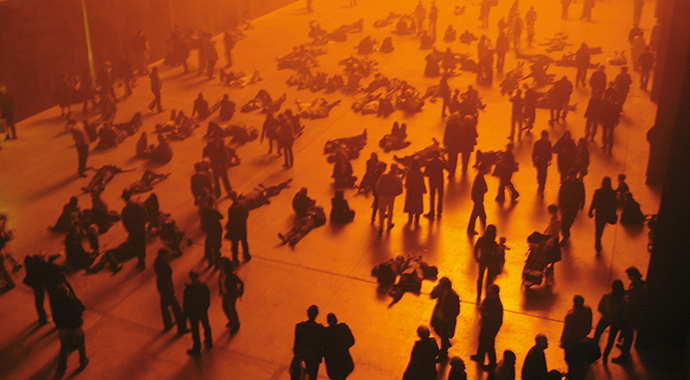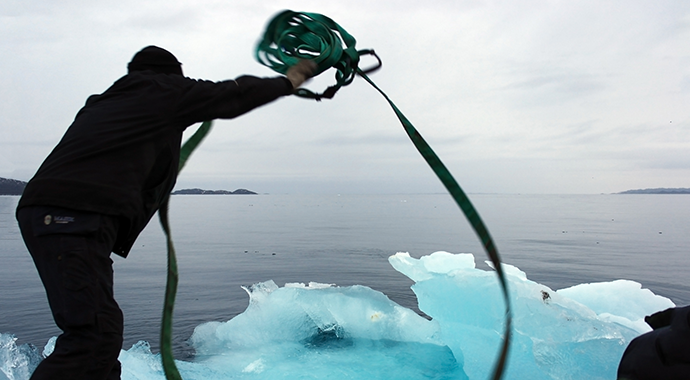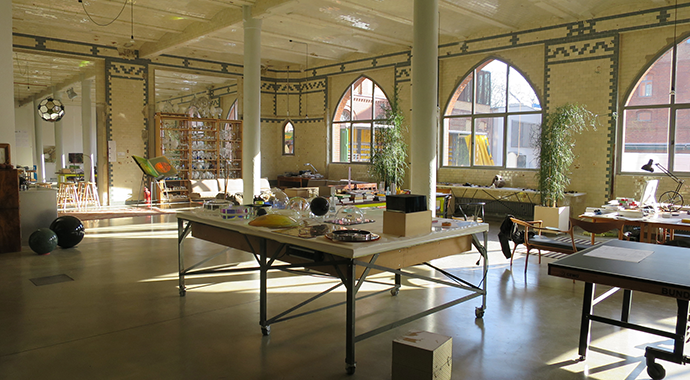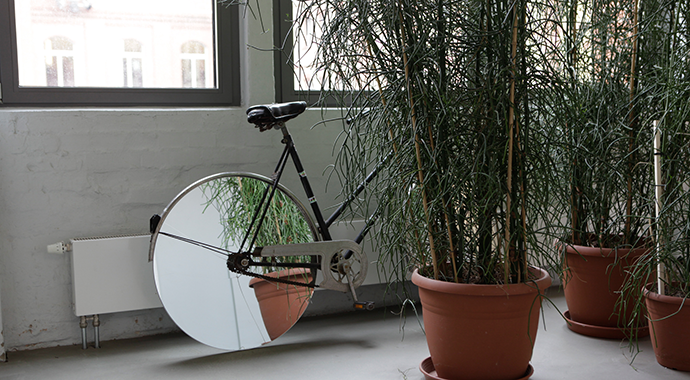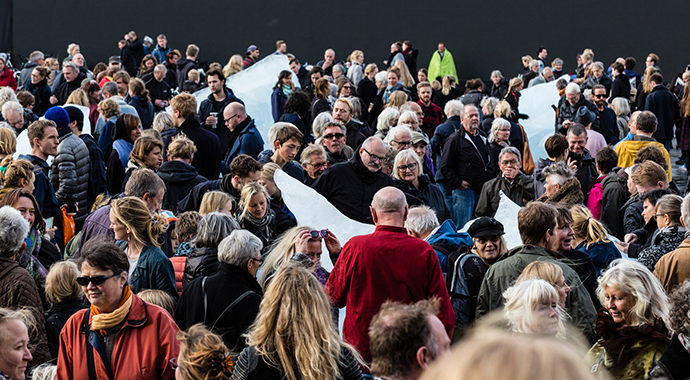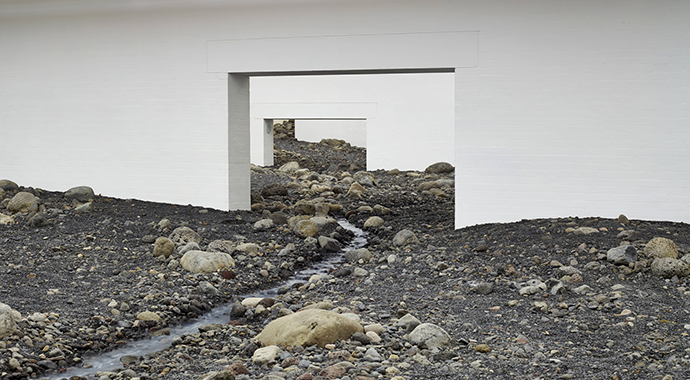Olafur Eliasson sees humans as part of nature
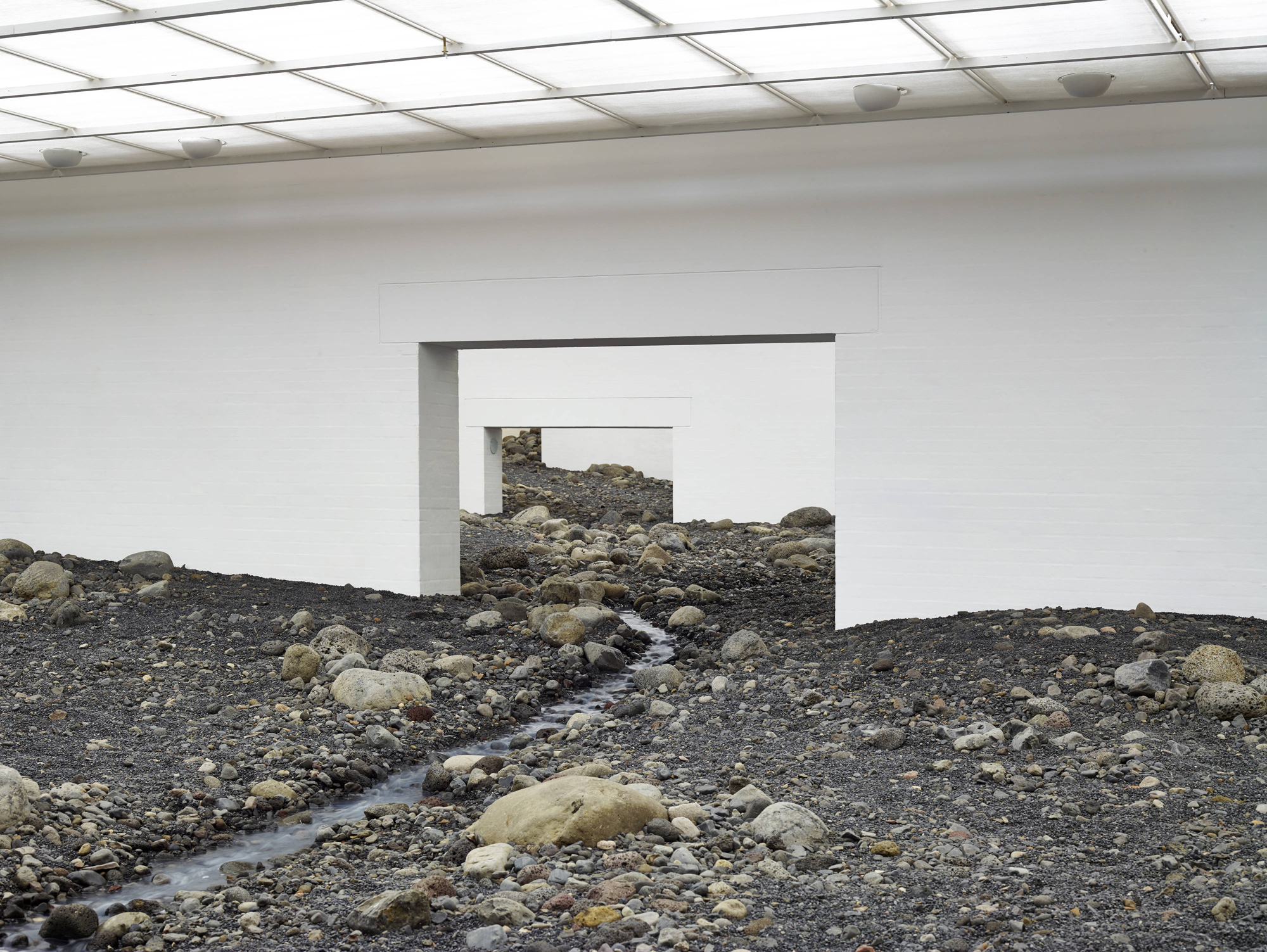
Danish–Icelandic artist Olafur Eliasson treats art as a means of turning thought into action. In 2014, Eliasson constructed a trickling, gurgling and crunching ‘Riverbed’ from blue basalt rocks at the Louisiana Museum of Modern Art in Humlebæk, Denmark. Here, he speaks with Danish biologist, science journalist and author Lone Frank about the ideas explored in that project and his work at large.
For Danish–Icelandic artist Olafur Eliasson, art is a means of turning thought into action. At no other moment in time has this been of greater importance as humanity confronts crises of climate, consumption and refugees. Eliasson’s work is fuelled by his interest in perception, movement and the dialogue between mind and body, or what he calls “seeing yourself sensing”. Working across sculpture, painting, public art, installation and more recently, social business (through his Little Sun solar project), Eliasson exhibits globally in major galleries and museums, but also in public space through architectural and artistic interventions. Based between Copenhagen and Berlin, he runs Studio Olafur Eliasson from the latter, which comprises over 90 craftspeople, technicians, architects, researchers, administrators, archivists and cooks.
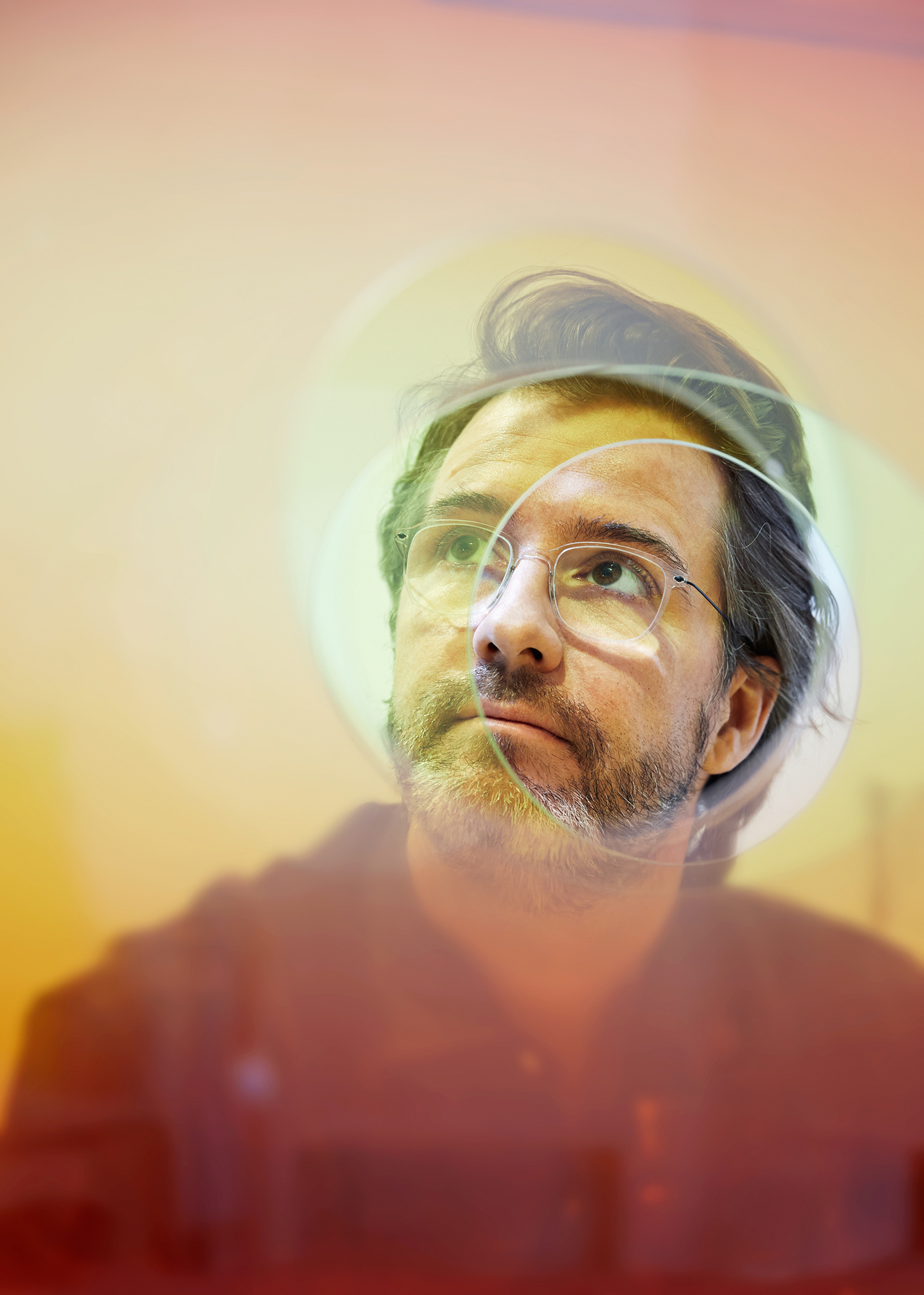
In 2003, Eliasson represented Denmark at the 50th Venice Biennale with The blind pavilion. Later that year, he constructed a monumental ‘sun’ from aluminium frames, mirror foil and mono-frequency lights for The weather project in the Turbine Hall at the Tate Modern. Lately, Eliasson’s poetic works are moving more and more towards political and environmental action. In 2014, he took out the front page of Danish daily Politiken with the text-based Dit indre vi (Your inner we) to inspire a sense of collectivity against the backdrop of the EU Parliamentary elections. His Ice Watch, 2015, transported 80 tonnes of harvested Greenlandic ice to the Place du Panthéon during UN COP21, a public symbol to mark our changing climate and the passing of time.In 2014, Eliasson constructed a trickling, gurgling and crunching Riverbed from blue basalt rocks at the Louisiana Museum of Modern Art in Humlebæk, Denmark. Here, he speaks with Danish biologist, science journalist and author Lone Frank about the ideas explored in that project and his work at large.
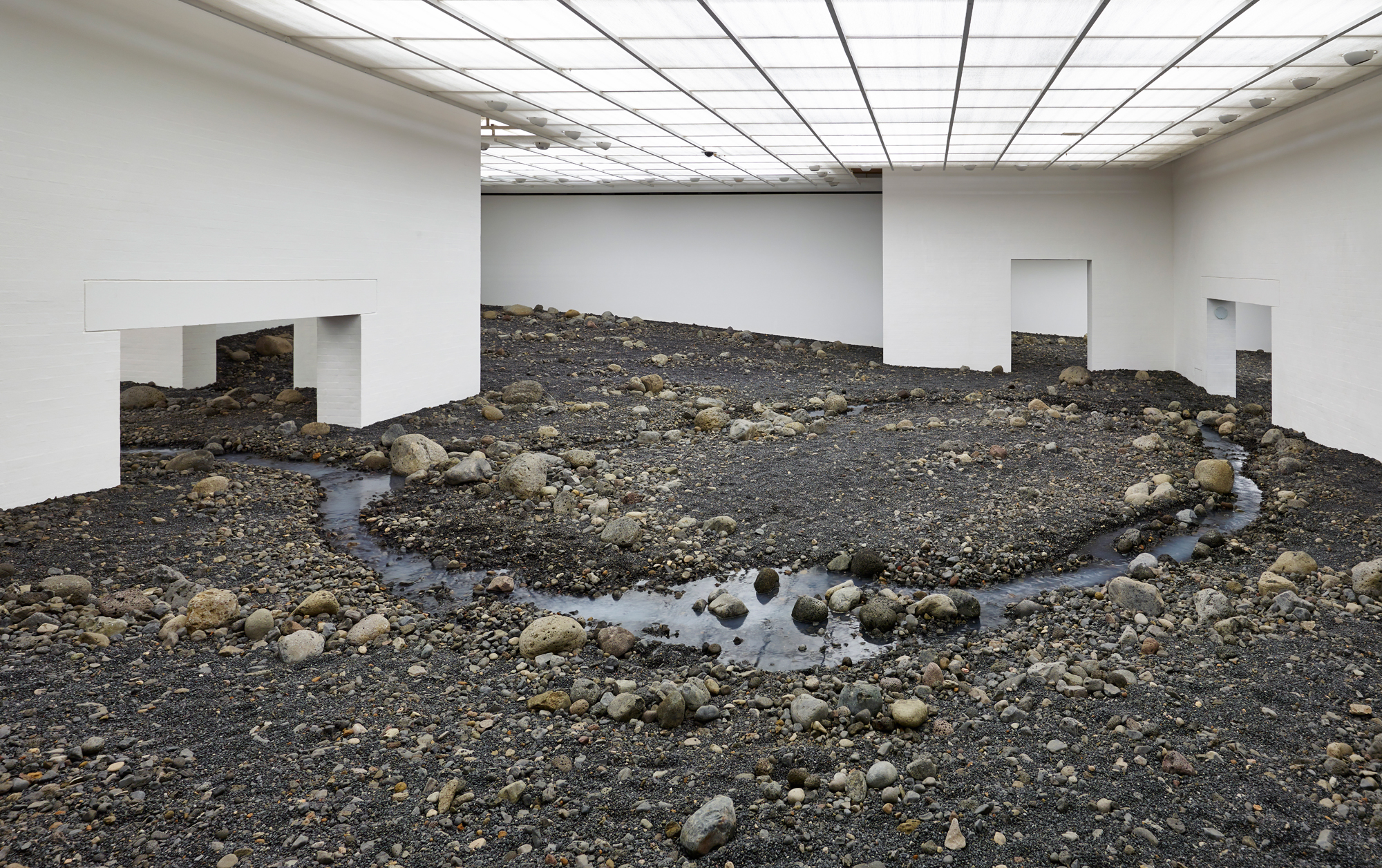
Olafur Eliasson: There’s a tradition of seeing the human being as a subject and what is outside us as an object; that’s how it’s viewed in phenomenology, for example, which I ‘grew up with’ at the art academy. But in the meantime, other people have emerged and they’re really interesting: Bruno Latour, for example, and Timothy Morton, who I got to know recently. I’m working with Bruno on another exhibition at present and he tends to tease me that I have certain ‘phenomenological weaknesses’. For him, it makes no sense to see humans as separate from nature.
Lone Frank: As a biologist, I think it’s very clear that we’re part of nature. We see this part from the inside and put ourselves on a pedestal, as if the rest of the world were something else, something outside us. But obviously we’re part of the evolution that has taken place on earth, and the fact that we start to intervene in nature – if I can put it that way – is just another event in the course of evolution. We have arrived at a stage where people talk about an Anthropocene Age – a period in which mankind is one of the driving forces of geological and climatic development. That’s an extremely huge thing.
OE: So, nature isn’t just out there, it’s also inside us.
LF: Yes, we are nature, and with time, we’ve grown into a considerable force of nature.
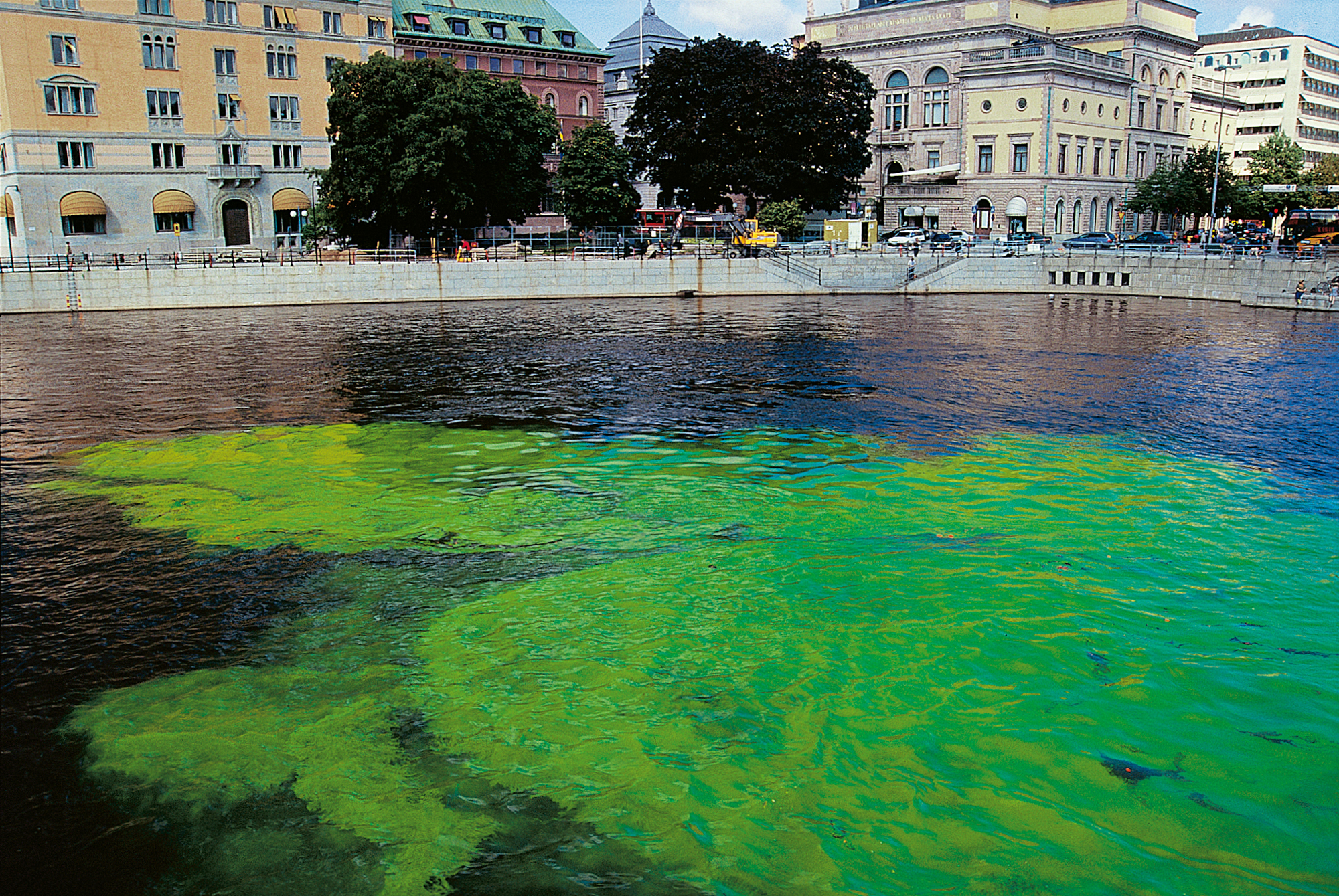
OE: That’s really interesting, and it must have consequences for how we experience the world. But part of what we experience on a daily basis still falls into a very strict division between object and subject, not least because of our consumption-oriented surroundings, which support the sale of objects and experiences in nice packaging. What I’m interested in with my work at Louisiana isn’t really that you experience an object, an artwork, but that you experience yourself.
LF: The question is whether you can transcend experiencing yourself as a subject and instead experience yourself as a part of nature. In reality, we’re just temporary vehicles for some genetic information, but you don’t have that experience of yourself, do you? So it’s a matter of being aware of where we are in this whole cycle.
OE: Yes, it’s crucial to see your own position in the ecosystem more clearly, and embodying ecology through our senses is an important tool in this.
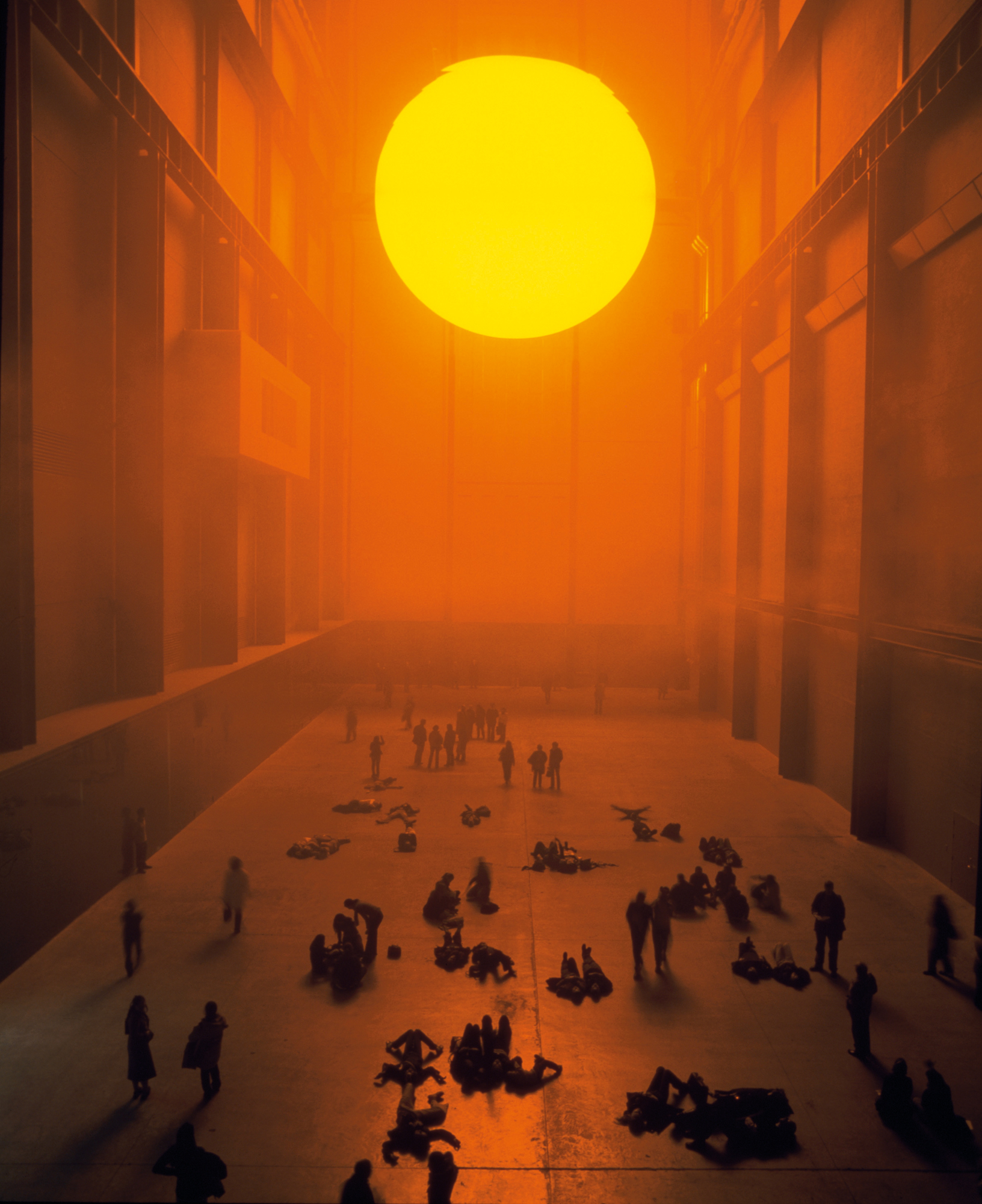
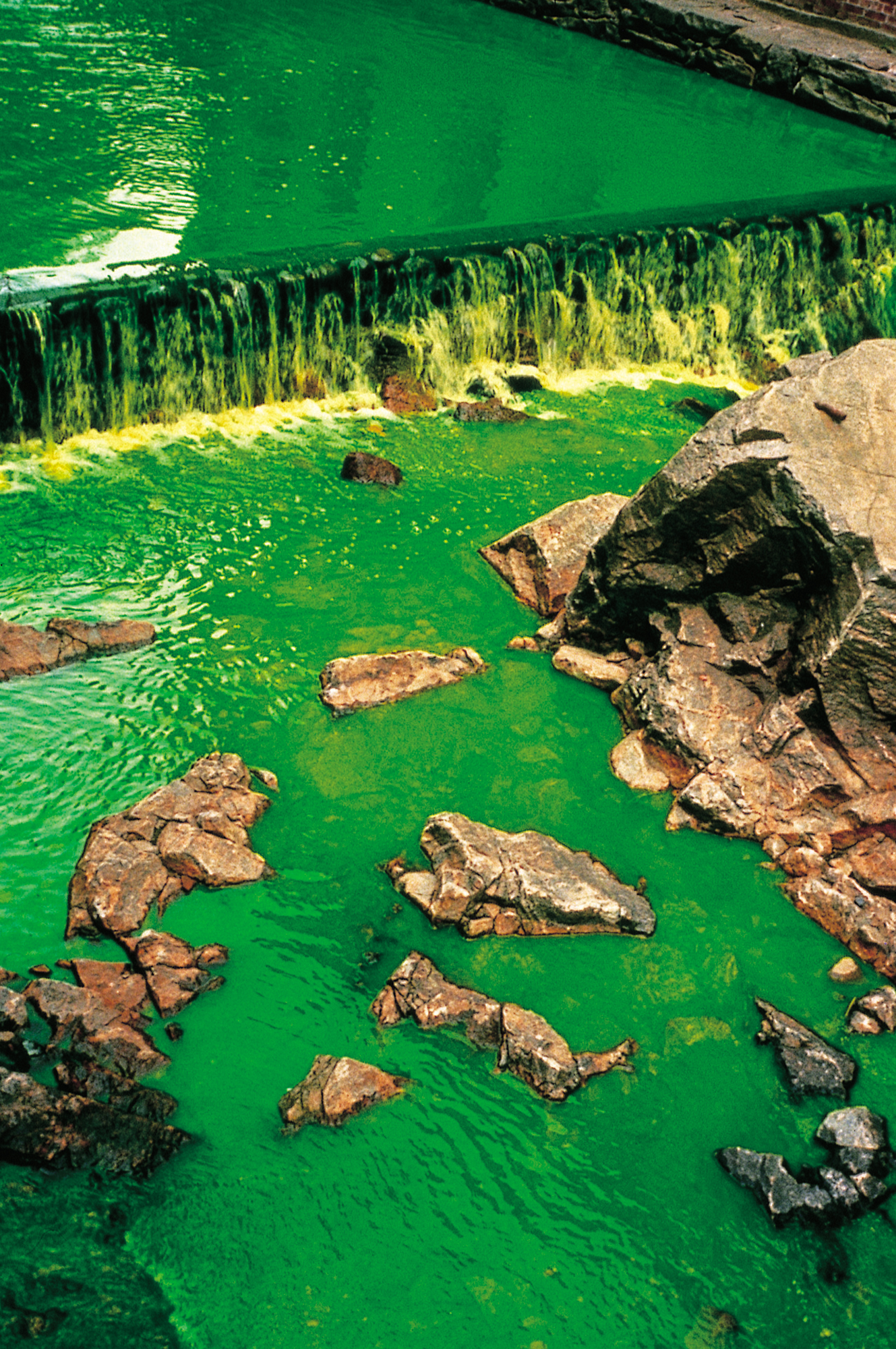
LF: We mustn’t forget that we sense the world the way we are able to sense it – not as it is. We sense what our brains make it possible for us to sense; we see the trees as green because our eyes work the way they do; we can’t see ultraviolet light and we can’t feel magnetic fields, and that sort of thing.
OE: So in that perspective, mankind is a limited measure of the world – a kind of barometer that only works at particular frequencies. As I was saying earlier, I’m interested in the new ecocriticism that has emerged with Latour, who reinterprets the role of the subject and challenges the Romantic view of nature. But as an artist, I often get tangled up in Romantic notions of nature, and, all other things being equal, Louisiana is also built up around a Romantic idea of the garden and nature and the meanings of culture and nature.
LF: Culture is something that arises from the human brain’s way of functioning, from our way of being animals. Culture refers to certain ways of existing in the world that we set up and that work for us to some degree. And as we encounter ecological problems, and as climate change affects us, it’s logical that we have to see ourselves in a different way. A change in culture has to come.
OE: How much do you think we are linked to animals?
LF: Oh, we’re endlessly linked! I don’t think you can point to the specifically human. As far as I can see, there are only differences of degree. Throughout history, we’ve tried to point to the specifically human. Is it the use of tools? No, there are a number of animals who can also do that. Nor is language categorically different for humans – it’s just better developed. So the more we look at nature, the clearer it becomes to us that we aren’t separate from it. Darwin toppled us from that pedestal 150 years ago when he said that we are simply an offshoot of the evolutionary tree. That is the core of his revolution and thinking, which has been almost unbearable for very many people.
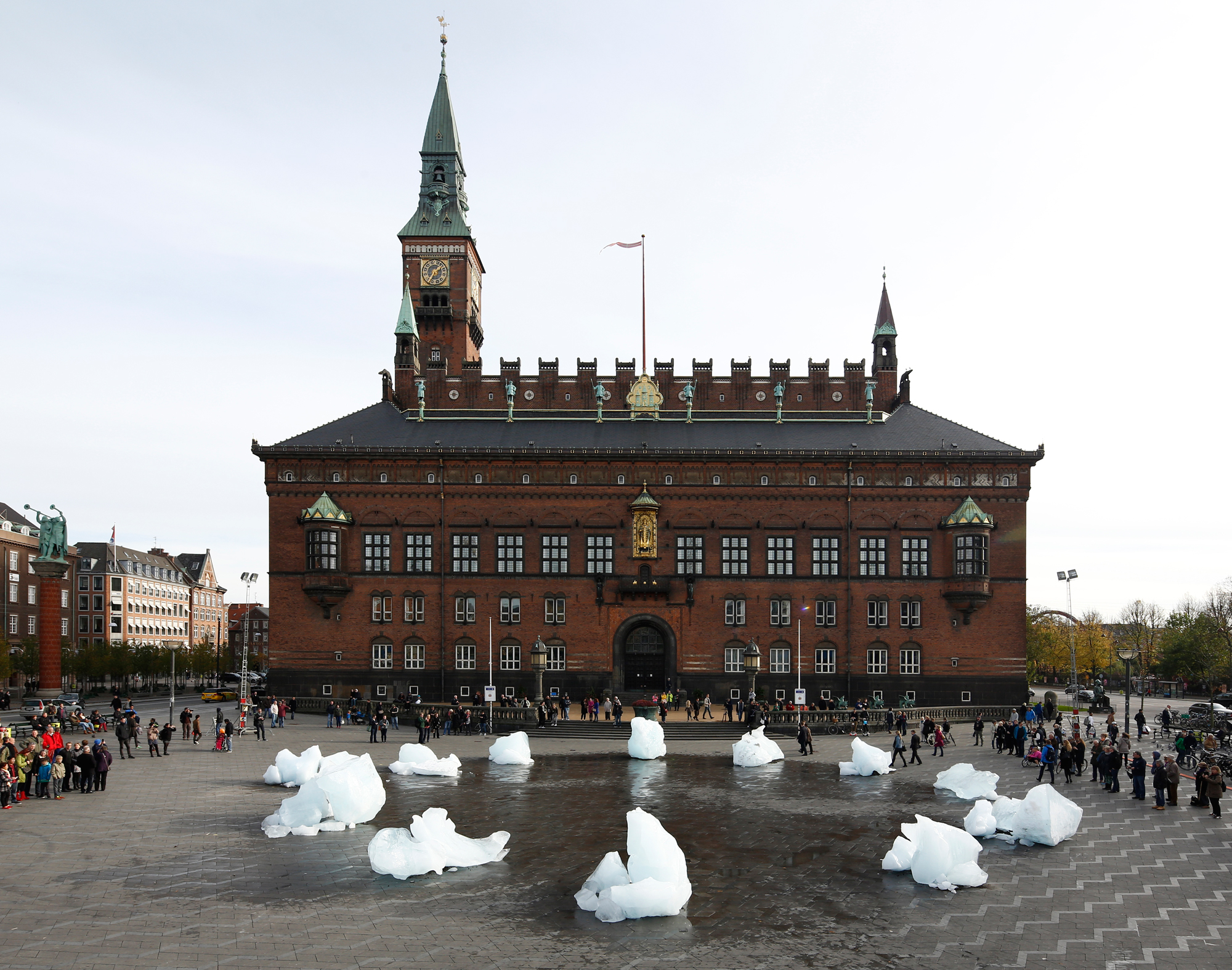
OE: Let’s look at a softer issue: Do you think there’s empathic potential in the idea that animals and people are not essentially different? Does it offer a possibility for solving problems of social exclusion or marginalisation?
LF: That’s just it – the ethical circle has widened. First, it was the men of the tribe that had the highest status. Women were slightly inferior and animals even more so. Now people are talking about special rights for other primates because they resemble us so much. People are also beginning to take industrialised farming seriously; what is it actually like for those animals? A pig is pretty close to a human being and is both an intelligent and emotionally highly developed animal. So yes, we live in a kind of ‘Age of Empathy’, where much is made of empathy or sympathetic understanding. Rationalism is no longer a Holy Grail. And if you cultivate empathy, that has to mean opening up to feeling more for the rest of nature.
Many thanks to Michael Juul Holm and Camilla Kragelund for permission to republish this conversation, which originally appeared in the catalogue for Riverbed © Louisiana Museum of Modern Art and Studio Olafur Eliasson, 2014.
